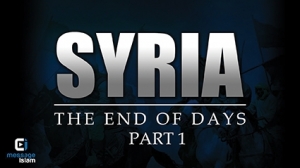End of Days: What Empowers ISIS?
Despite being one of the best-financed terrorist organizations in the world, the Islamic State is unable to sustain itself solely on behalf of its oil revenues and the ransoms received through hostages. Their tactics of self-maintenance have previously been demonstrated, through the centralization of water, flour and hydrocarbon resources in the areas the jihadists advanced. Yet, one of the key instruments for their profitable expansion remained concealed in the Islamic eschatology.
The vast majority of Muslims around the world think that the end of the days is either here, or will be here soon. According to a survey conducted in 2012 by the Pew Research Center, in most countries surveyed in the Middle East, North Africa, South Asia and Southeast Asia, half or more people believed they would witness the return of the Mahdi (The Guided One).
The apocalyptic narrative suggests Mahdi’s appearance being directly linked to the preceding large-scale sectarian war, preparing the Muslim community for the second coming of Jesus. It is important to acknowledge that the early Islamic apocalyptic prophecies arose from the sectarian conflicts in the early Islamic world waged in Iraq and the Levant. Therefore, the prophecies resonate powerfully in contemporary sectarian civil wars.
Narratives of the coming final battle were already being hijacked as early as the 1980s, when Abdullah Azzam, the founder of modern jihadism, encouraged all Muslims to take part in the jihad in Afghanistan. The Islamic State, however, began to promote the apocalyptic traditions using literalist approach- through actions as well as words. The Islamic State initially intended to manipulate the Muslims into inflaming rivalry between the two major sects, as it would have been considered as a sign that the final days had arrived. The literalist approach of the Daesh has also been demonstrated by their interest in Syria and Kobane in particular, as the eschatological literature refers to the crisis in Syria and the massacre of Kurds.
The Islamic state has used the prophetical predictions to attract more members. In an interview with Reuters, a Sunni Muslim stated:
“If you think all these mujahideen came from across the world to fight Assad, you are mistaken. They are all here as promised by the Prophet. This is the war he promised- it is the Grand Battle”.
ISIS has also emphasized the appearance of the pro-Assad Hezbollah militia- whose flag is yellow. The Islamic eschatology prognosticated that when the fighters with yellow flags fight anti-Shi’ites in Damascus and Iranian forces join them, the Mahdi will eventually show up. Such ‘signs’ of the incoming final battle have largely supported the spread of Jihadi-Salafist ideology across the globe.
The capture of Dabiq- a Syrian farmland 6 kilometres away from the Turkish border, should also be understood as an important milestone supporting the jihadists. Prophet Muhammad is believed to have said that the “last hour will not come until the Muslims vanquish the Romans at Dabiq”.
The occupation of Dabiq enabled the Islamic State to boast its success and the importance of the location for the final battle to come. Later, its declared intentions to conquer Constantinople (Istanbul) supported their claims of closely following the prophecy. Furthermore, the Islamic State eagerly awaited the arrival of the enemy army in Dabiq in order to defeat them and initiate countdown to the apocalypse.
As expected, the capture of the town inspired many Islamic State supporters to become directly involved in the final battle; however, their enthusiasm did not last long. The town of Dabiq was recaptured by the Syrian rebels in October 2016, following other major losses of the Islamic State. Despite this, the Daesh will eventually try to advance in Dabiq again and again, as devotion to the apocalyptic narratives has come to be an integral part of the ISIS modus operandi.
Zurab Khutsianidze












